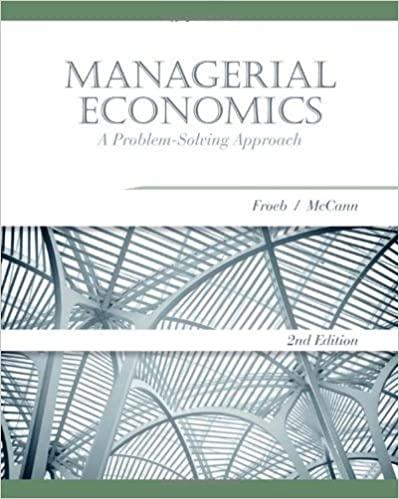Question
Chapter 7 Poor Economics a) Gustavo Fring offers loans at the low interest rate of 1% per day. Do the math to show this is
Chapter 7 Poor Economics
a) Gustavo Fring offers loans at the "low" interest rate of 1% per day. Do the math to show this is actually equivalent an annual interest rate of roughly 3,678%, assuming 365 days in a year. Slippin' Jimmy's Payday Loans loans money at 5% per week. Do the math to show that this is equivalent to roughly 1,164% annually, assuming 52 weeks per year. If someone borrows $500 at the beginning of the year and did not pay until the very end of the year, how much would they owe in both cases?
b) (Four parts) In the Duflo slides on this chapter, we saw an algebraic model that can explain many of the stylized facts about lending to the world's poor. In this model, an entrepreneur can earn F(k) on an investment of k units of capital, where F() is some function. an entrepreneur with wealth w must borrow k-w from a bank. At the end of the period, the entrepreneur may repay the bank R(k-w), where R is an interest factor greater than 1 (R=1+the interest rate, representing paying back the original loan plus interest, for every unit of currency borrowed). Alternatively, the entrepreneur may cheat the bank and not repay, which costs h for every unit borrowed. First, algebraically determine the payoffs to the borrowing entrepreneur under the repayment and cheating scenarios (these are on the slides). The bank uses deposited money to make loans, and pays D to depositors for every unit of currency that the bank lends, where D is greater than 1. The bank must pay a fixed cost of c for every entrepreneur they lend to in order to determine the creditworthiness of the entrepreneur. Second, explain why R(k-w)=D(k-w)+c for every loan if the bank makes zero profit. Given that the bank will choose k to be just large enough so that all loans will be repaid, R(k-w)=hk, based on the payoffs you determined previously. Third, use this break even condition along with the bank's zero profit condition to show that D(k-w)+c=hk, and from this, that k=(Dw-c)/(D-h). Fourth, based on this last expression, what happens to the amount of money lent as wealth (w) changes, as the cost of cheating (h) changes, and if the cost of assessing creditworthiness (c ) becomes very high (use words and math)?
Step by Step Solution
There are 3 Steps involved in it
Step: 1

Get Instant Access to Expert-Tailored Solutions
See step-by-step solutions with expert insights and AI powered tools for academic success
Step: 2

Step: 3

Ace Your Homework with AI
Get the answers you need in no time with our AI-driven, step-by-step assistance
Get Started


